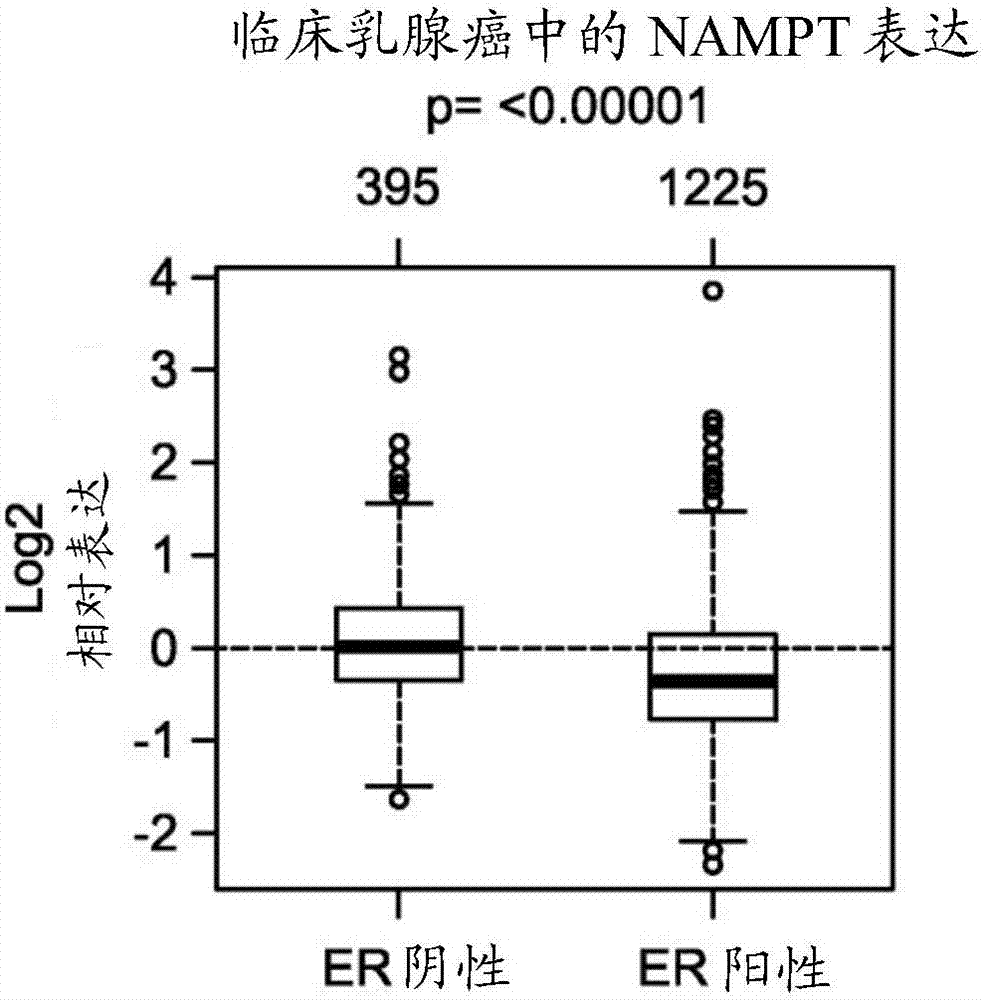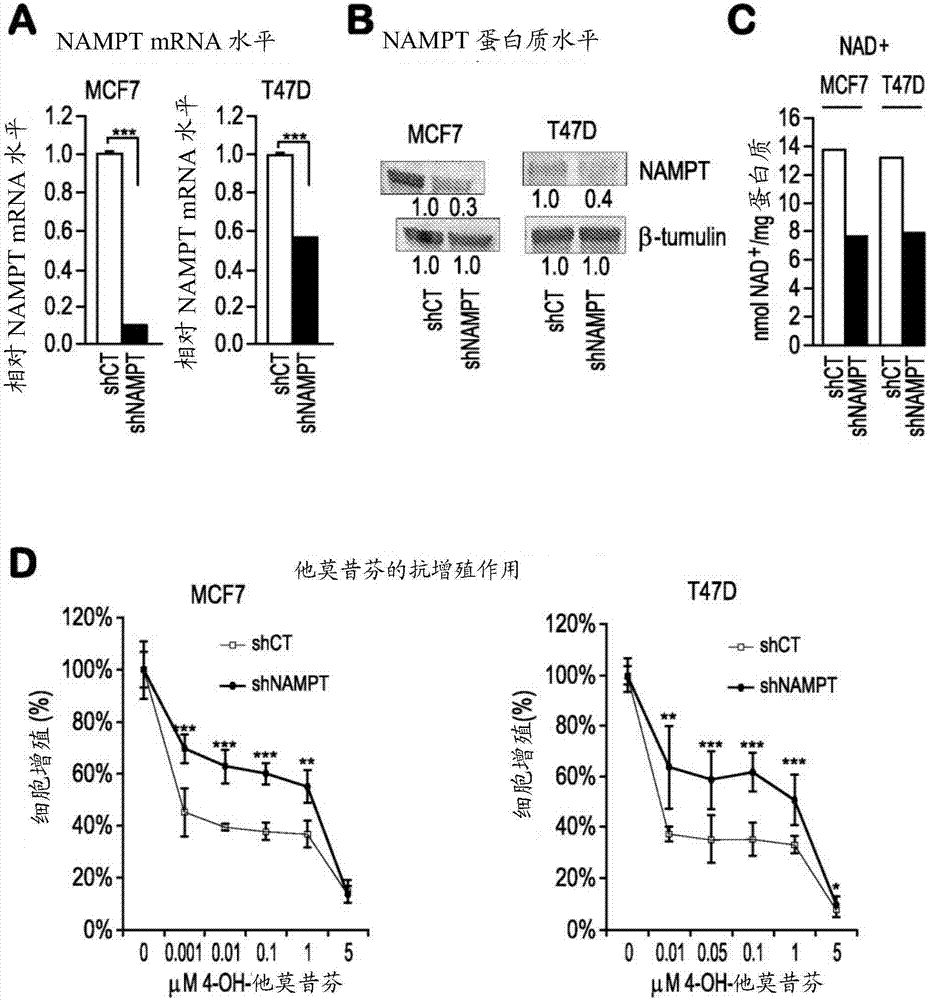Methods and compositions for enhancing cancer therapy
A therapy, cancer technology, applied in the field of enhanced cancer therapy and composition, able to solve problems such as disease recurrence
- Summary
- Abstract
- Description
- Claims
- Application Information
AI Technical Summary
Problems solved by technology
Method used
Image
Examples
Embodiment 1
[0109] Example 1 Metabolic Pathways Affecting Cancer Therapy Efficacy and Resistance
[0110] To better understand the mechanisms driving tumor development and cancer progression, we analyzed cellular energy metabolism in breast cancer cells. due to NAD + We are particularly interested in the possible role of synthetic and salvage pathways in tumor progression and therapy resistance. We identify specific metabolic pathways that influence therapy efficacy and the development of resistance to major types of breast cancer treatments.
[0111] To directly analyze the effect of NAMPT expression on the responsiveness of ER-positive breast cancer cells to antihormonal therapy, we investigated the response to tamoxifen, a widely used ER antagonist through its active metabolite 4-hydroxytamoxifen. Moxifen effect), whether and how the regulation of NAMPT expression affects tumor cells. To this end, we first measured NAMPT expression in MCF7 and T47D cells, both of which are luminal e...
Embodiment 2
[0113] Example 2 Enhances antihormonal therapy by upregulating the NAMPT pathway
[0114] The results described in Example 1 were completely unexpected, as they were contrary to what was suggested in the literature (e.g., Hsu et al., Autophagy 5, 1229-1231, 2009), and our own previous studies showed that nicotinamide induced Phagocytosis (Santidrian et al., J. Clin. Invest. 123:1068-1081, 2013), a mechanism thought to suppress the effects of stress-induced anticancer treatments, including antihormonal therapy. The results described in Example 1 further suggest that activation of the NAMPT pathway can enhance resistance to hormone therapy in ER-positive breast cancer cells.
[0115] To further analyze this clinically highly relevant finding indicative of a potential new therapeutic approach, we compared tamoxifen treatment of estrogen-positive MCF7 and T47D breast cancer cells with NAM (vitamin B3 and NAD + precursor) processing combination. Such as Figure 4 As shown in A. ...
Embodiment 3
[0120] Example 3 Prediction or Diagnosis of the Efficacy of Antihormonal Therapy
[0121] The unexpected results observed by the inventors further suggest that NAMPT expression in breast cancer can be used as a biomarker to monitor the efficacy of anti-hormone therapy and to determine the probability of tumor recurrence after anti-hormone therapy. To examine the clinical evidence for this possibility, we analyzed whether NAMPT expression was associated with antihormonal therapy outcome. We used publicly available clinical databases to investigate the relationship between NAMPT expression and prognosis in ER-positive breast cancer patients ( Figure 10 with 11 ). Results from 1881 breast cancer patients (Ringnér et al., PLoS One 6, e17911, 2011) showed that ER-positive breast cancers had significantly lower NAMPT expression levels than ER-negative breast cancers ( figure 2 ). Interestingly, our analysis further revealed that ER-positive breast cancers comprise a subgroup i...
PUM
 Login to View More
Login to View More Abstract
Description
Claims
Application Information
 Login to View More
Login to View More - R&D
- Intellectual Property
- Life Sciences
- Materials
- Tech Scout
- Unparalleled Data Quality
- Higher Quality Content
- 60% Fewer Hallucinations
Browse by: Latest US Patents, China's latest patents, Technical Efficacy Thesaurus, Application Domain, Technology Topic, Popular Technical Reports.
© 2025 PatSnap. All rights reserved.Legal|Privacy policy|Modern Slavery Act Transparency Statement|Sitemap|About US| Contact US: help@patsnap.com



